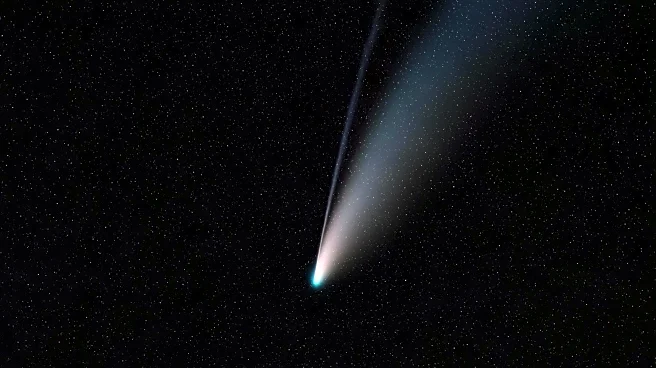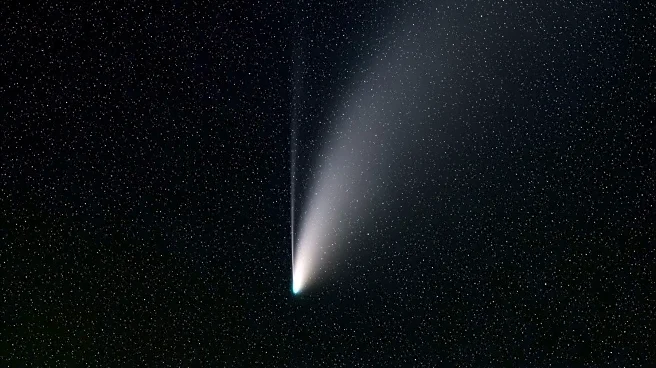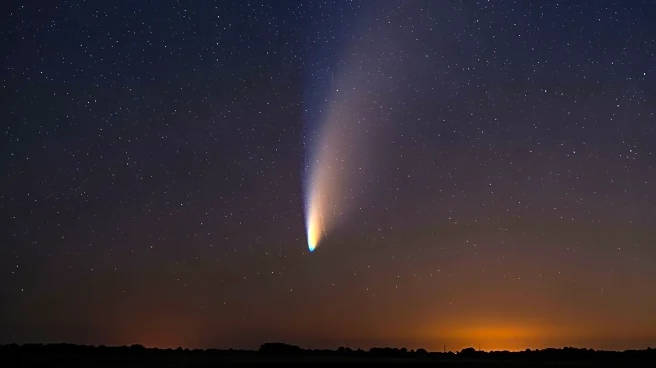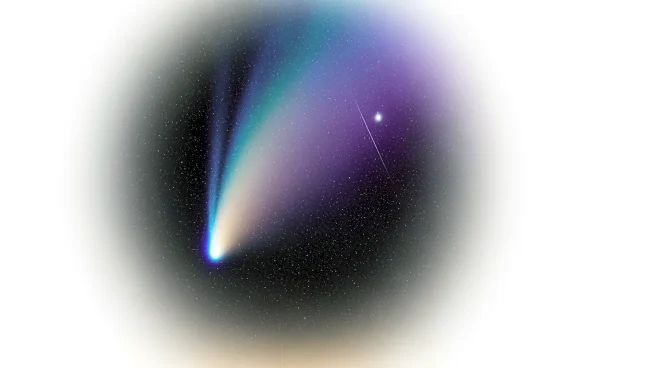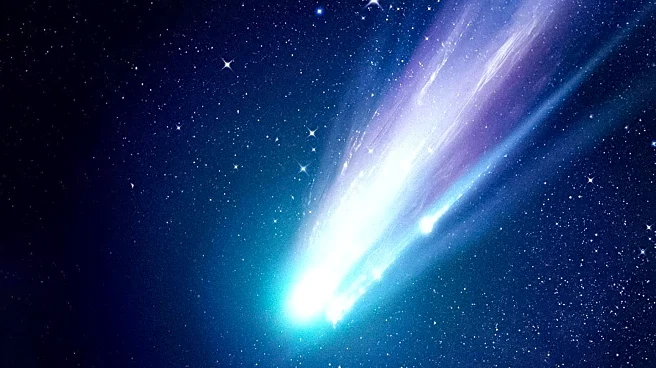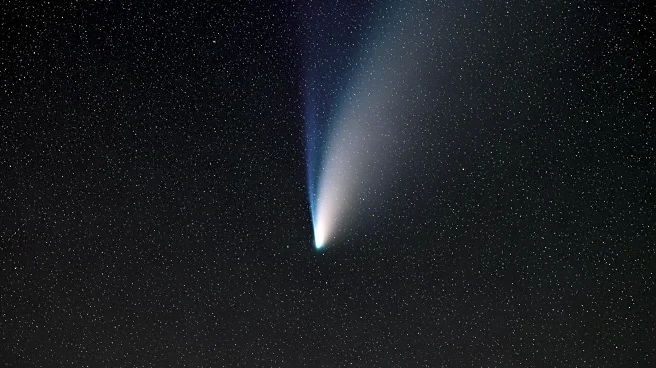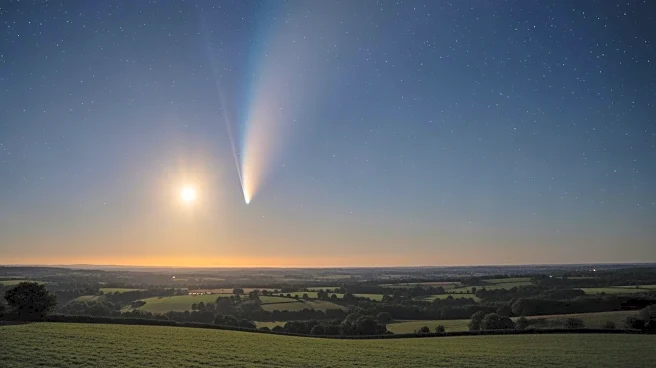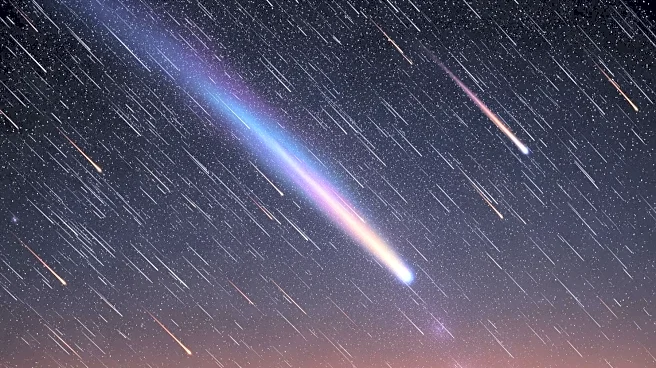What's Happening?
Skywatchers in the United States are set for a celestial event as Comet Lemmon (C/2025 A6) and Comet SWAN (C/2025 R2) reach their brightest phase on Sunday, October 19, 2025. These comets will be visible
in the night sky, with Comet Lemmon appearing in the northwest and Comet SWAN in the southwest. The comets' closest approach to Earth coincides with the Orionid meteor shower and a new moon, providing ideal dark sky conditions for viewing. Comet Lemmon, discovered in early 2025, will pass approximately 55.4 million miles from Earth on October 21, while Comet SWAN, slightly dimmer, will be visible tracing a path away from the Sun. Stargazers can use binoculars or small telescopes to view these comets, with Comet Lemmon appearing as a greenish glow with a faint tail.
Why It's Important?
This celestial event is significant for astronomy enthusiasts and the general public, offering a rare opportunity to observe two comets simultaneously. The event highlights the dynamic nature of our solar system and provides educational opportunities for amateur astronomers. The visibility of these comets, especially during the Orionid meteor shower, enhances public interest in astronomy and encourages outdoor stargazing activities. The event also underscores the importance of dark sky preservation, as light pollution can hinder the visibility of such celestial phenomena. This weekend's viewing conditions are particularly favorable, with no moonlight interference, making it an ideal time for educational institutions and astronomy clubs to engage the public in observational activities.
What's Next?
As the comets make their closest approach to Earth, astronomers and enthusiasts will continue to track their paths using digital tools and apps. The visibility of Comet Lemmon and Comet SWAN is expected to peak this weekend, after which they will gradually fade from view. Observers are encouraged to take advantage of the current conditions, as increasing moonlight toward the end of October will reduce visibility. The event may also inspire further interest in cometary studies and public engagement in astronomy, potentially leading to more organized stargazing events and educational programs.
Beyond the Headlines
The appearance of Comet Lemmon and Comet SWAN offers a deeper understanding of cometary behavior and the composition of our solar system. Comet Lemmon's bright green hue, caused by diatomic carbon molecules, provides insights into the chemical processes occurring as comets approach the Sun. This event also highlights the cultural and historical significance of comets, which have been observed and recorded by civilizations throughout history. The public's fascination with such celestial events can foster a greater appreciation for science and the natural world, encouraging future generations to explore careers in astronomy and space sciences.


